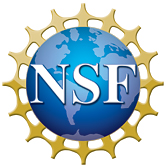Active Colloids

Interfacial "phoretic" effects - such as electrophoresis, thermophoresis, diffusiophoresis, etc. - are from this standpoint a most promising avenue given the increased surface to volume ratio. We recently proposed a design for a swimmer that takes advantage of the gradient that is caused and maintained by asymmetric catalytic activities on its surface.
We have also studied the feasibility of such design, and various effects such as size, shape, and relative importance of surface activity versus mobility. Moreover, the stochastic motion of such active colloids has been shown to be anomalous due the memory effect of the concentration profile of the solute molecules as well as density fluctuations.

A collaborating experimental team in Sheffield (Steve Ebbens, Jon Howse, Richard Jones, Tony Ryan) has been able to make such reaction-driven swimmers in the laboratory and study their physical behaviours. For micron-sized beads that were half covered by Pt in a solution of hydrogen peroxide, propulsion velocities as high as several microns per second were found. A second generation of these microswimmers capable of moving on circular and cycloidal trajectories has recently been made by attaching two janus beads at different angles.
Group members involved: R. Golestanian, J. Cohen (alumnus)








